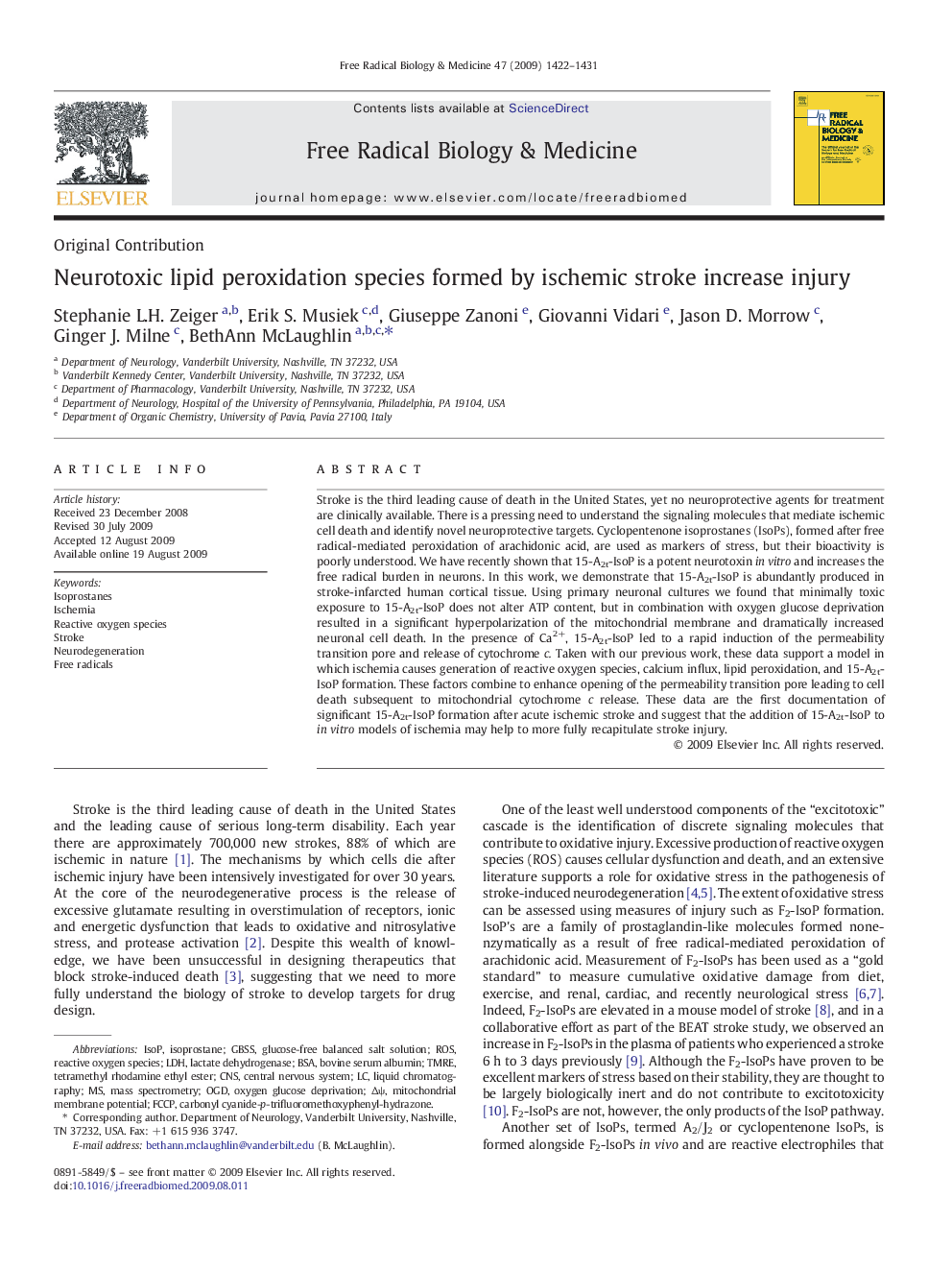| Article ID | Journal | Published Year | Pages | File Type |
|---|---|---|---|---|
| 1909731 | Free Radical Biology and Medicine | 2009 | 10 Pages |
Stroke is the third leading cause of death in the United States, yet no neuroprotective agents for treatment are clinically available. There is a pressing need to understand the signaling molecules that mediate ischemic cell death and identify novel neuroprotective targets. Cyclopentenone isoprostanes (IsoPs), formed after free radical-mediated peroxidation of arachidonic acid, are used as markers of stress, but their bioactivity is poorly understood. We have recently shown that 15-A2t-IsoP is a potent neurotoxin in vitro and increases the free radical burden in neurons. In this work, we demonstrate that 15-A2t-IsoP is abundantly produced in stroke-infarcted human cortical tissue. Using primary neuronal cultures we found that minimally toxic exposure to 15-A2t-IsoP does not alter ATP content, but in combination with oxygen glucose deprivation resulted in a significant hyperpolarization of the mitochondrial membrane and dramatically increased neuronal cell death. In the presence of Ca2+, 15-A2t-IsoP led to a rapid induction of the permeability transition pore and release of cytochrome c. Taken with our previous work, these data support a model in which ischemia causes generation of reactive oxygen species, calcium influx, lipid peroxidation, and 15-A2t-IsoP formation. These factors combine to enhance opening of the permeability transition pore leading to cell death subsequent to mitochondrial cytochrome c release. These data are the first documentation of significant 15-A2t-IsoP formation after acute ischemic stroke and suggest that the addition of 15-A2t-IsoP to in vitro models of ischemia may help to more fully recapitulate stroke injury.
